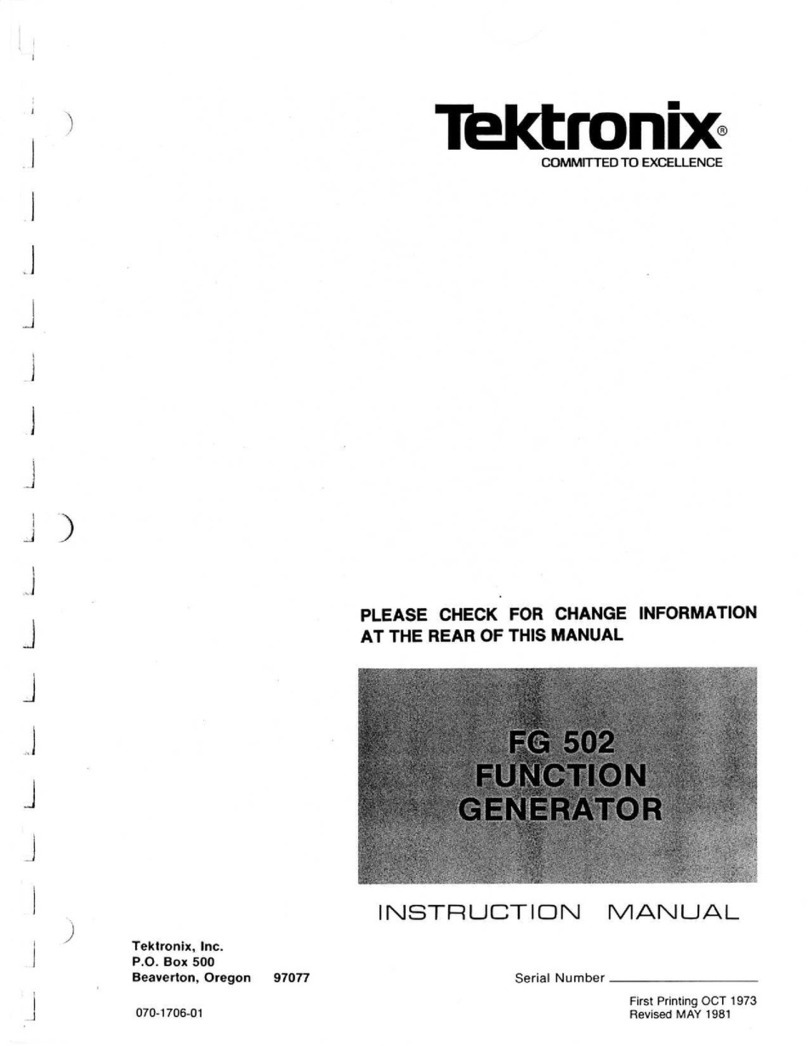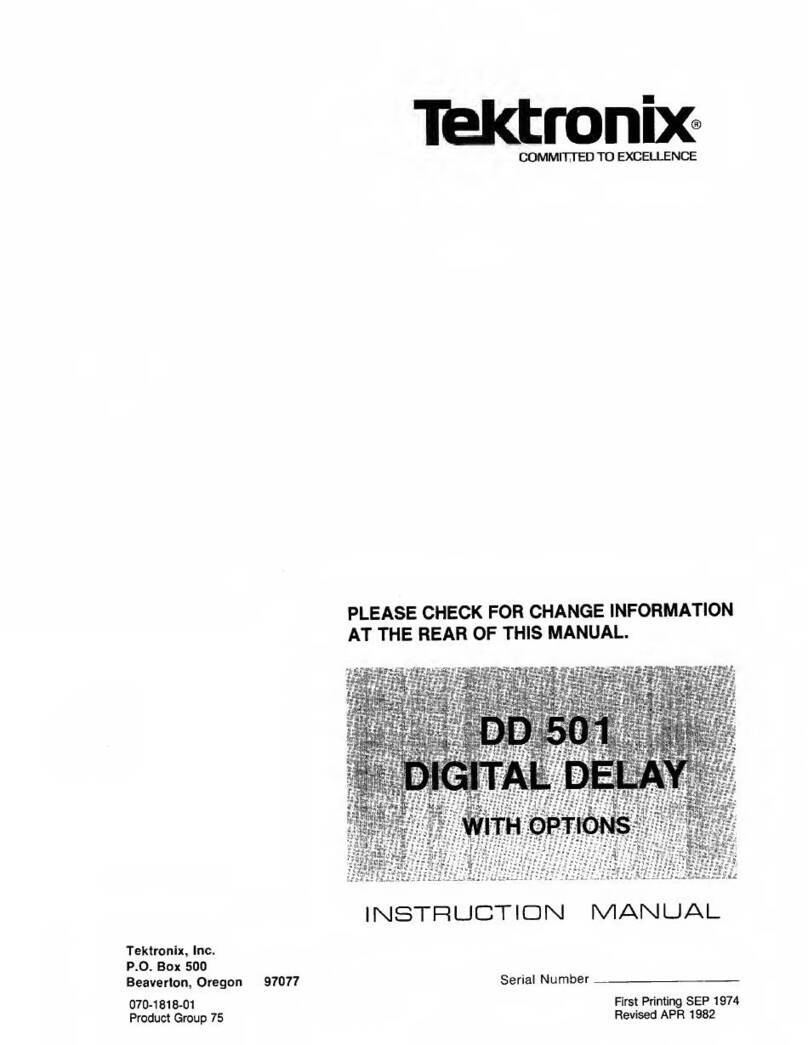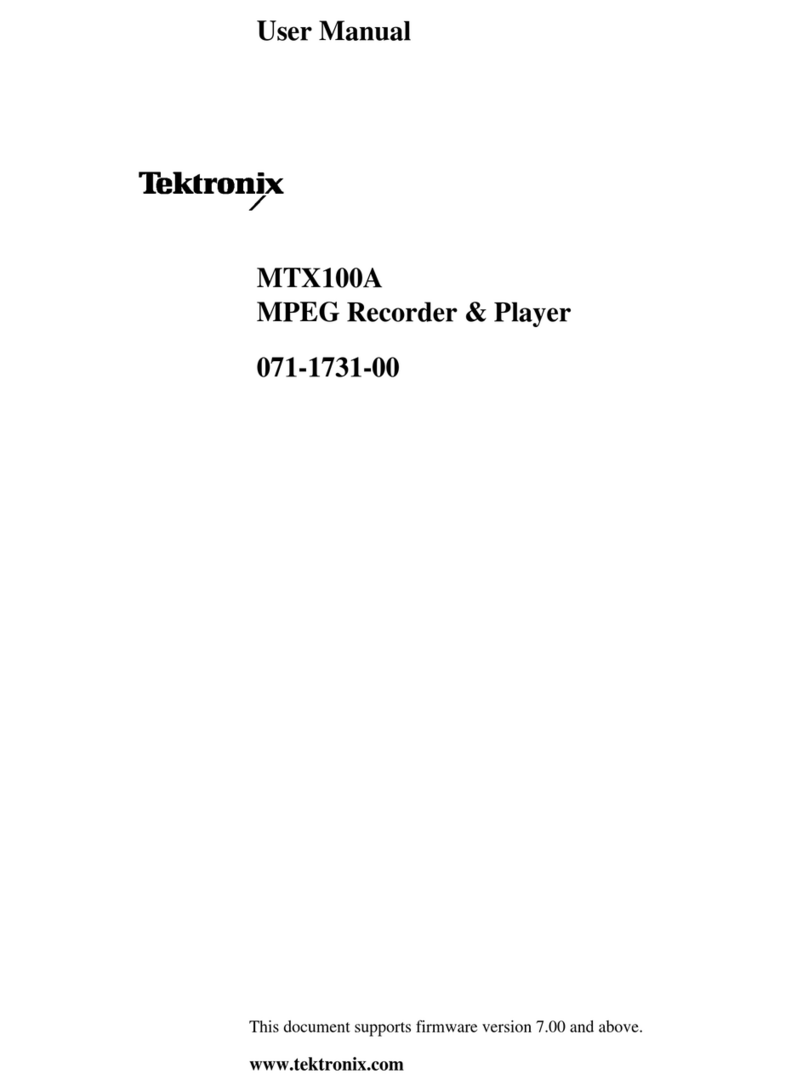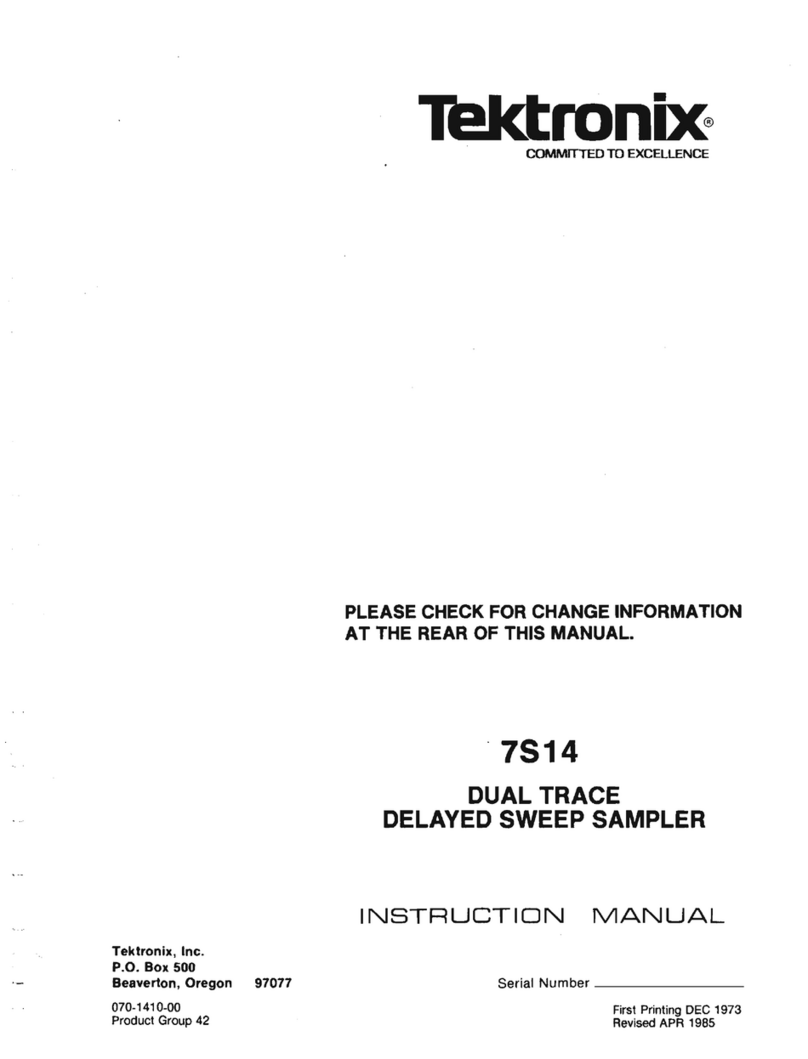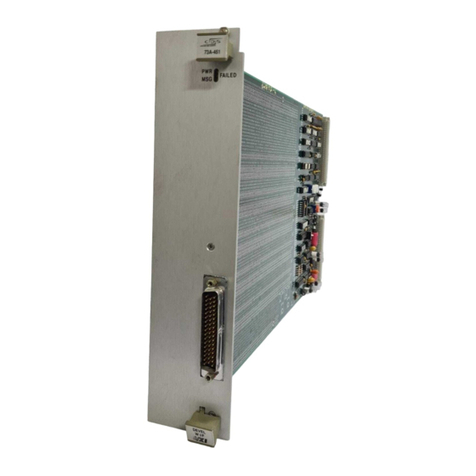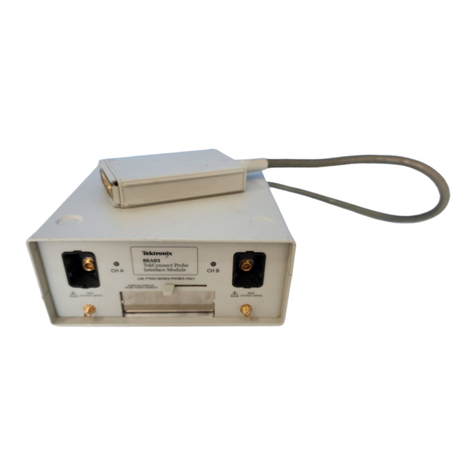
P7001/IEEE Interface
SELECTING DEVICE ADDRESS (Continued)
Each of the five bits is set to 1or Dby five corresponding rocker
switches, numbered 1on the left (Least Significant Digit) to 5on the right
(Most Significant Digit). Note that this is reversed from the order in
which the numbers are read. When arocker switch is pushed in at the top,
that bit has been set to abinary 1; e.g., if the first two switches on the
left are pushed in at the top and the other three are in at the bottom, the
Device Address is set to Qflflll (3 decimal).
When the DPO memory location button 'D' is pushed in, the Device Address
that has been selected with SN412 will be displayed in the lower right-hand
corner of the CRT. Note that when Device Address is elicited, any data pre-
viously stored at Channel 7of memory 'D' (Field 0) will be destroyed.
SETTING P123 STRAP OPTION
The P123 strap option allows the interface to operate more efficiently
with different controllers. Amore thorough explanation of use of the strap
option may be found in Section 3of this manual. Figure 2-2 shows connector
P123 set for both "Standard" operation (jumper not installed) and ”Optional"
operation (pin 1jumpered to adjacent pin -pin 1is indicated withu»).
P123633 :2 g81 P123 fig: m873
I; aaaaEflifl 8E
U122 U123 U122 U123
(a) Standard Operation (b) Optional OperatiozréS23 03
l
Figure 2—2 Setting the P123 Strap Option
Access to the jumper is gained through ahole in the left rear of the in—
terface housing (see Figure 2—3). To change operating modes, remove the plug
from the hole and reach in with longnose pliers to re—position the jumper.
To avoid loss when operating in the "Standard“ mode, the jumper may be placed
on pin 1or the adjacent pin (above pin 1) with the free end extending to the
left. If the DPO was energized while the jumper was re-positioned, it must
now be de—energized and a”power—up” sequence performed to activate the change.
2—2 @
